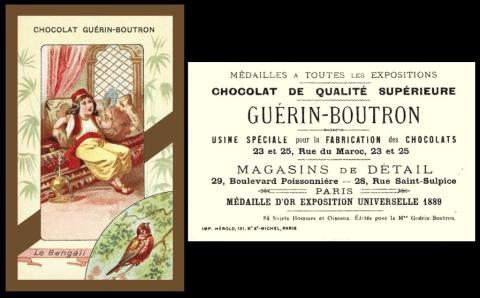
Today, for our first non clue card, it is fitting to speak of why we have an International Mother Language Day at all. The truth behind that is told by its other name, Martyrs Day, for it remembers four students, who were killed in Bangladesh, on the 21st of February 1952, during campaigns and protests that their beloved Bengali language should not be swept away. And to also note that Bengali did survive, becoming, today, the fifth most spoken language of all.
Everyone seems to agree on the French title of this set, but there is much debate about what it represents, Is the person the characteristic of the bird, or are they just the National Costume, or even just a typical child of that country ? The truth depends on how many cards you have. Some are indeed National, or at least a recognisable costume from that land, but not all. Whilst some, for example, several of the water birds, just show children on the beach or on boats. And others, especially the nightingale, do show a boy singing, to demonstrate the bird has one of the loveliest voices.
Our card is entitled "Le Bengali", and the bird is presumably a Bengali Finch, though they have nothing to do with Bengal, or even Bangladesh, which is why they are called a Society Finch now. In fact, they came from China, and only came to Europe in the mid nineteenth century, starting out in zoos and then becoming pets. Another odd thing is that the "Bengali" was their English name - in Europe, and presumably France, where these cards were issued, they were known as `Movchen`, or small gull.
As far as the person, the important characteristic is the bubble pipe, or hookah. To modern collectors, having a child smoking a hookah would be a bad thing, but at the time people would not have thought this way. The main thing about the hookah though is that this word is from Bengali: where it was called a `hukka`, and also where it has been the smoking device of choice for centuries. The shape of the rounded domes is actually a throwback to the fact that the original ones were made out of coconuts. This added a very slight flavour to the tobacco but it was often enhanced with flower petals, and spices. The idea of adding these, however, was not just for the flavour, it was also to act as a filter and to collect any grains of dust.
The set can always be spotted by the rather curious way that the golden borders have diagonals coming off them. And there is a rudimentary list, supplied by Mr. Sharp, whose card this is too. The cards are not numbered
- L`Albatros - (albatross) - a seaman on deck
- L`Alouette - (lark) - girl with mirror, doing her hair
- L`Eterneau - (starling #1) - chef spilling pans
- L`Epervier - (sparrowhawk) - boy on a boat throwing a net
- L`Ibis - (ibis) - an Egyptian by the Nile
- La Bergeronnet - (wagtail) - girl with a sheep
- La Mouette - (seagull) - girl with fishing net
- La Sarcelle - (teal duck) - girl punting a boat
- La Tourterelle - (turtle dove) - girl on balcony
- Le Crabier - (heron) - girl with bucket on beach
- Le Dindon - (turkey) - Dutch boy with flowers
- Le fou commu - (booby bird) - a fool or jester with a stick
- Le Guepier - (bee eater) - boy running with dog
- Le Hibou - (owl) - boy in glasses with an umbrella
- Le Martinet - (swallow) - Chinaman with whip
- Le Menure Lyre - (lyrebird) - girl playing a lyre
- Le Paon - (peacock) - boy in red fancy clothing
- Le Pic Vert - (woodpecker) - boy cutting down tree
- Le Pinson - (chaffinch) - girl with dress caught in door, spilling the tea
- Le Rossignol - (nightingale) - boy opera singer
- Le Sansonnet - (starling #2) - shoemender by window
- Le Vautour - (Vulture) - boy with sword robbing boy with basket
